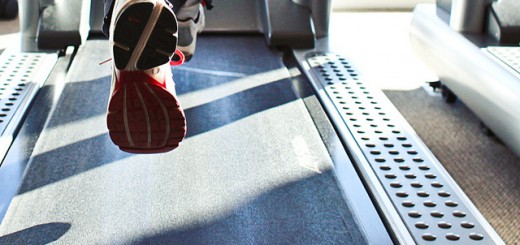High Intensity Interval Training Running
HIIT, or High intensity interval training running workouts are short, high-intensity efforts of exercise followed by equal or slightly longer periods of recovery or rest. The intensity should be close to or at your anaerobic threshold which, when compared with continuous intensity exercise, studies have showed burn more calories and improve aerobic capacity.
High intensity interval training running can be effective in enhancing your lactate threshold as well, which has been shown to be a key factor in determining performance for runners.
For example, after a warm-up, run two minutes at a hard effort, followed by two to three minutes of easy jogging or walking to catch your breath. Unlike tempo workouts, with running interval training you’re running above your red line and at an effort where you are reaching hard for air and counting the seconds until you can stop—a controlled fast effort followed by a truly easy jog.
The secret to high intensity interval training running sessions is in the recovery as patience and discipline while you’re running easy allows you to run the next interval strong and finish the entire workout fatigued but not completely spent. Just like rest, your body adapts and gets stronger in the recovery mode.
Interval training running session can be done outdoors on a track or quiet road but are easiest to manage when performed on a treadmill as you can set up the speed variables beforehand. Please see the page on treadmill speed sessions for more information.
There are some handy interval training running sessions that I’ve used below that you can adapt to suit your needs?
2 MINS ON-ONE MINUTE OFF
This is an old favourite and is nice and simple and will serve you well if you are following a 5k training plan.
- Use the quick-set speed interval change options to set both a run pace and a recovery pace. For example, Run Pace = 13 kmphr, and a Recovery Pace of 7 kmph.
- Run for 2 minutes at your Run Pace.
- Switch to Recovery Pace for 1 minute.
Repeat x 8
This should be a tough session if you are new to treadmill workouts so adjust the speeds so you are challenged but can still complete the session. After a few completions you can play with the run and recovery speeds to keep challenging yourself.
1K INTERVALS
Another treadmill session that uses the quick-set speed interval change options and I found this really useful when training for longer distance events such as a 10k or half-marathon. It can still be incorporated into 5k training though as it’s great for building strength and endurance.
- Use the quick-set speed interval option to set a Run Pace and a Recovery Pace. For example, run pace = 12 kmphr, and a recovery of 7 kmphr.
- Run for 1km at your Run Pace.
- Switch to Recovery Pace for 200 meters.
*It’s a good idea to memorise before the session when the quick-set speed interval changes need to be made. For Example, after completion of the first rep your Run Pace interval should begin again at 1.2km, 2.4km, 3.6km, etc.
Repeat x 4 if you are following a 5k training plan.
Repeat x 6 if you are following a 10k training plan.
2K INTERVALS
The 2k treadmill workouts are more beneficial for 10k and half-marathon training plans and are largely as per the 1k Interval session above. Your Run Pace for the 2k Interval session should be slightly lower than what you would use for the 1k Interval session and you may want a longer recovery but you should be able to keep the same Recovery Pace. For example:
- Run pace = 11 kmphr, and a recovery of 7 kmphr.
- Run for 2km at your Run Pace.
- Switch to Recovery Pace and run for 300 meters.
Repeat x 4 if you are following a 10 training plan.











hello